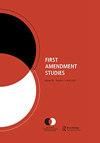职场欺凌政策、高等教育和第一修正案:架起桥梁,而不是筑起高墙
Q2 Social Sciences
引用次数: 18
摘要
本文的目的是证明高等教育机构应该改变他们的教师行为准则,以反映职场欺凌作为一种不可接受的骚扰形式。文章首先给出了职场欺凌的定义;其次,它分析了第一修正案为何不是绝对的,尤其是在工作场所;第三,它审查了对这一问题的立法和司法关注不足;最后,一个论点表明,高校没有提供足够明确的政策和程序来解决职场欺凌问题。这一论点的重点是我们对美国多所大学和学院的276份教师行为准则进行专题分析的结果。该分析揭示了两个主要主题:骚扰挂机和员工敬业度。基于这一分析,我们得出结论,高等教育机构应该改变其教师行为准则,将欺凌定义为一种独特的骚扰形式,就如何定义欺凌向教职员工提供明确的沟通,并为职场欺凌的目标和旁观者提供指导。本文章由计算机程序翻译,如有差异,请以英文原文为准。
Workplace bullying policies, higher education and the First Amendment: Building bridges not walls
ABSTRACT The purpose of this article is to demonstrate that higher education institutions should change their Faculty Codes of Conduct to reflect workplace bullying as a form of unacceptable harassment. The article first provides a definition for workplace bullying; secondly, it offers an analysis of how the First Amendment is not an absolute, especially in the workplace; thirdly, it examines the scant legislative and judicial attention that is given to this issue; and finally, an argument is made to show how colleges and universities are not providing clear enough policies and procedures to address workplace bullying. That argument focuses on results of our thematic analysis of 276 Faculty Codes of Conduct from a variety of universities and colleges across the United States. That analysis revealed two primary themes: the Harassment Hang-up and Employee Engagement. Based on this analysis, we conclude that higher education institutions should change their Faculty Codes of Conduct so bullying is defined as a distinctive form of harassment, provide faculty and staff clear communications regarding how to define bullying, and offer guidance for both targets and bystanders of workplace bullying.
求助全文
通过发布文献求助,成功后即可免费获取论文全文。
去求助
来源期刊

First Amendment Studies
Social Sciences-Law
自引率
0.00%
发文量
0
期刊介绍:
First Amendment Studies publishes original scholarship on all aspects of free speech and embraces the full range of critical, historical, empirical, and descriptive methodologies. First Amendment Studies welcomes scholarship addressing areas including but not limited to: • doctrinal analysis of international and national free speech law and legislation • rhetorical analysis of cases and judicial rhetoric • theoretical and cultural issues related to free speech • the role of free speech in a wide variety of contexts (e.g., organizations, popular culture, traditional and new media).
 求助内容:
求助内容: 应助结果提醒方式:
应助结果提醒方式:


